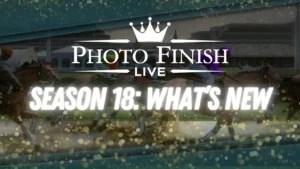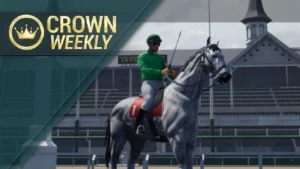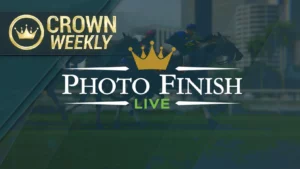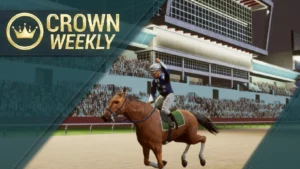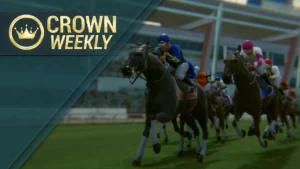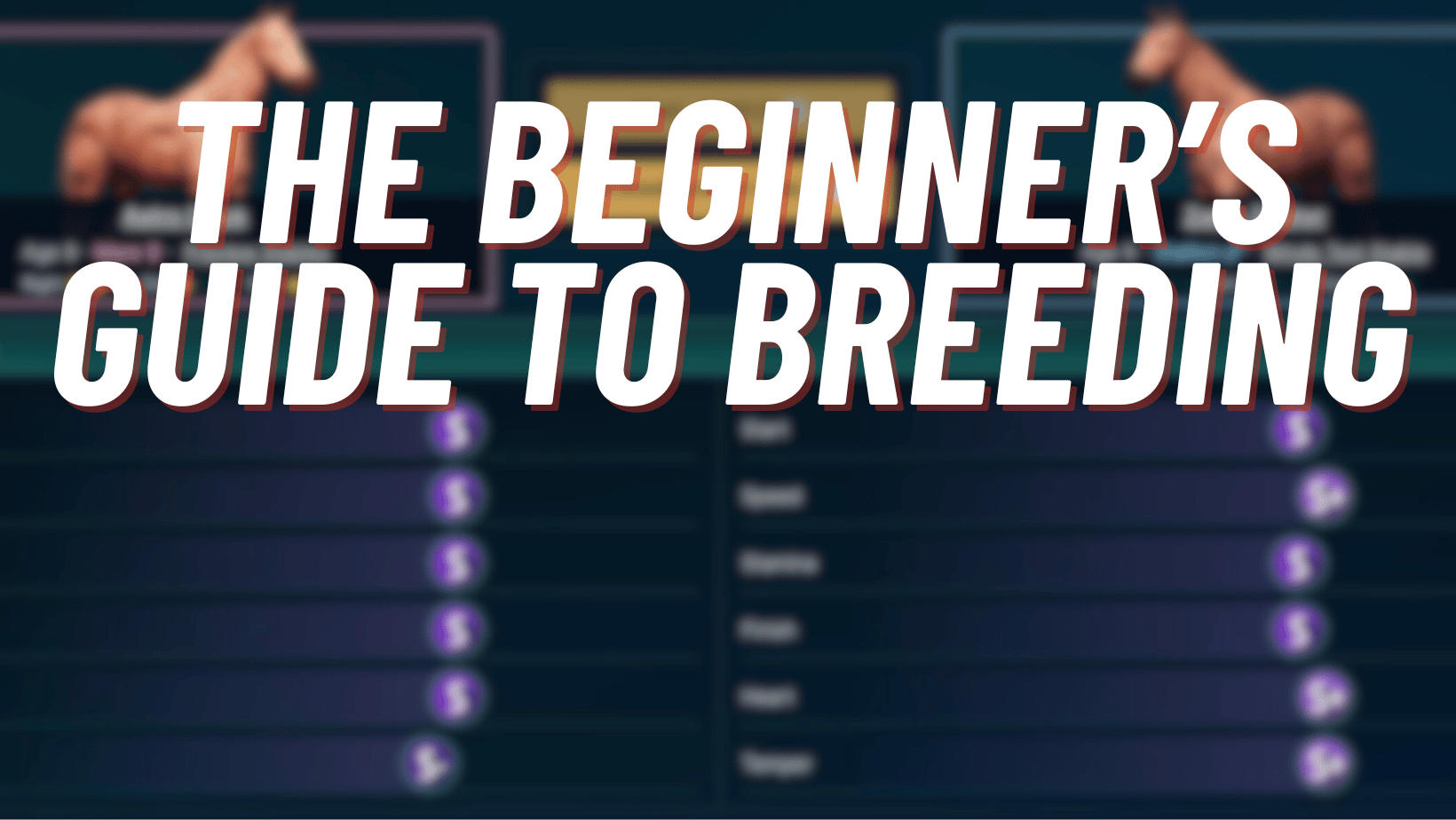
Now that you’ve read Part 1 of The Beginner’s Guide, created an account, and obtained your first horse, you’re ready for the talk about the Photo Finish™ breeding process.
Because the only thing better about a Photo Finish™ horse is more Photo Finish™ horses. Particularly when you had a say in things.
Breeding in Photo Finish™ isn’t just crucial – it’s the bloodline of the player’s future and the entire racing ecosystem. Successful and thoughtful breeding strategies allow players to expand their stables and create the next grand champion.
Better horses, better ingredients, Photo Finish™. That’s what we always say.
Let’s jump into what should be considered a map of the breeding landscape. If you’re interested in more of a usual manual with details, step-by-step instructions, and advice, check out How to Breed in Photo Finish™ written by one of our incredible community members, David Chapman.
We also strongly suggest you consult incredible third-party tools that may help you make informed breeding decisions, particularly those provided here by MJ Informatics.
Breeding Primer
Before we jump into it, here is a list of a few core items you need to know about before you even think about smashing two horses together.
- Seasons and Aging: Seasons last four real-life weeks, and each horse ages one year per season.
- Retirement and Breeding: Horses must be retired to breed and may do so as early as age 3. Once retired, they can no longer race. Horses may breed until the age of 25.
- Breeding Window: Each season has a specific breeding window. As of this writing, that window is between Day 2 and 10 of each season.
- New foals are born on the first day of each season – Foal’s Day!
- Studs (male) can breed 35 times per season and are paid for each breeding session.
- Fillies (female) can breed once per season and keep the foal, but they must pay a stud for the right to breed
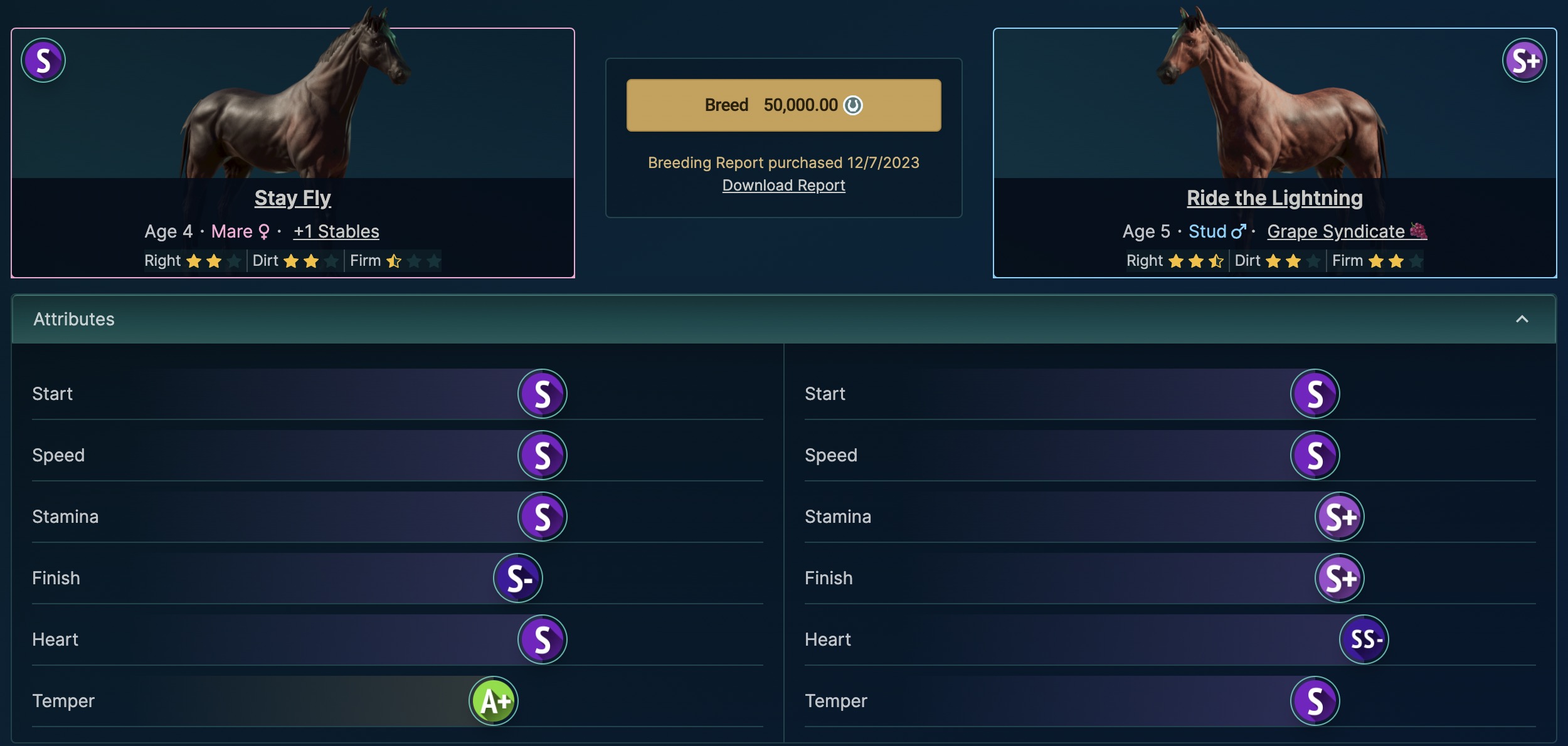
Most Commonly Asked Breeding Questions
1) How do I find a quality breeding partner?
It’s a question as old as time itself – what’s the best way to breed? Who, what, when, how, how many times, etc..
Below are some things to consider before you bring another horse into the virtual world.
Define Desired Traits
Everyone has a type, including virtual horses, so it only makes sense that you first know what you’re looking for before you toss one into the breeding barn. By figuring out the specific attributes you want to breed for. Focusing on 2 or 3 traits is recommended to increase the chances of success.
Consistent Parentage
Look for a partner with consistent parentage for the desired traits. If both parents consistently exhibit the characteristics you want, it enhances the likelihood of passing them on. Photo Finish™ genealogy is based 100% on true-life genetics and in-depth attributes. That means consistency is often rewarded just as in real life, while nothing is guaranteed.
Patience and Persistence
If at first you don’t succeed, breed, breed again.
It may take a few breeding attempts before obtaining the desired combination of genes. If your foals need to improve, consider finding another horse with the desired traits.
2) Why are sibling horses so different?
The short answer is genetic variation. The long story is much more complicated but ends in the short answer – genetic variation!
Some sisters with blonde hair have brothers with brown hair – this is life! Horses inherit only 50% of each parent’s genes, allowing for many possibilities in the offspring.
The combination of genes inherited from both parents contributes to the unique traits of the foal. Even if both parents share a trait, the combination may result in a different outcome.
3) How important are horse grades?
A grade is an average of attributes like Start, Speed, Stamina, Finish, Heart, and Temper. While informative, it doesn’t directly affect breeding.
A good grade indicates high average attributes, making it a valuable reference for the overall quality of the horse.
4) Do genes matter?
Of course! Like NBA players tend to have tall children, virtual horses with good genes produce foals with similar characteristics.
Breeding in Photo Finish™ LIVE follows genetic rules, and no specific attributes, preferences, or items directly affect breeding outcomes. The key to a successful breed is having good genes in the parents, improving the odds of a quality foal.
5) What are Breeding Reports, and how do I receive them?
What if I told you there was a way to get a sneak peek at the foal of two horses that bred together might look like? Photo Finish™ offers that in the form of Breeding Reports – a not entirely scientific but sound guestimate at the breeding outcome.
Before breeding, you’ll find a tab that offers the purchase of a breeding report for 4,000 $DERBY, or $50. If you own 20 Photo Finish PFPs, you receive a certain amount of reports per mare, per season, free.
Once you purchase a breeding report, you will be sent the report directly to your stables ‘reports’ inbox. Delivery is typically immediate.
You’ll find informational graphics in your inbox that should resemble these below.

6) Is inbreeding bad?
Inbred horses will have a chance of a much more negative impact, particularly the closer the inbred generations are. As of this writing, a review of a horse’s family tree goes back four generations. It is best to completely avoid inbreeding as it will negatively impact the resulting horse.
So, simply put — don’t inbreed your horses. Chances are they won’t succeed, and you’ll wish you didn’t.
Breeding Basics
Now that you’ve sat through the training video, it’s time to get out there and implement what you’ve learned.
There is no advice below, but rather a general direction and education for navigating the Photo Finish™ breeding interface.
Important: Remember, only retired horses are eligible to breed. Let’s make sure that’s done first before moving on.
Now that your horse is retired from competing on the tracks, it’s ready to procreate in the breeding barn — exciting!
The breeding process is different for studs and mares, so let’s cover the role each plays and how they meet to create a new horse.
Stud Breeding
- Go to the “My Stable” tab, select the stud you want to breed, and click the ‘Retire Horse’ button.
- After retiring the stud, send him to the breeding barn by clicking the “Put Out To Stud” button.
- Set the price per breeding session and click the “add listing” button to make the stud available for breeding.
Filly Breeding
- Retire the filly as you would retire a stud. Once retired, they can no longer race.
- Select the filly you want to breed in the “My Stable” tab.
- Navigate to the breeding tab, filter studs based on preferences, and choose a suitable stud.
- Confirm the breed on the stats confirmation page, ensuring no inbreeding occurs, and the foal will be born at the start of the next season.
